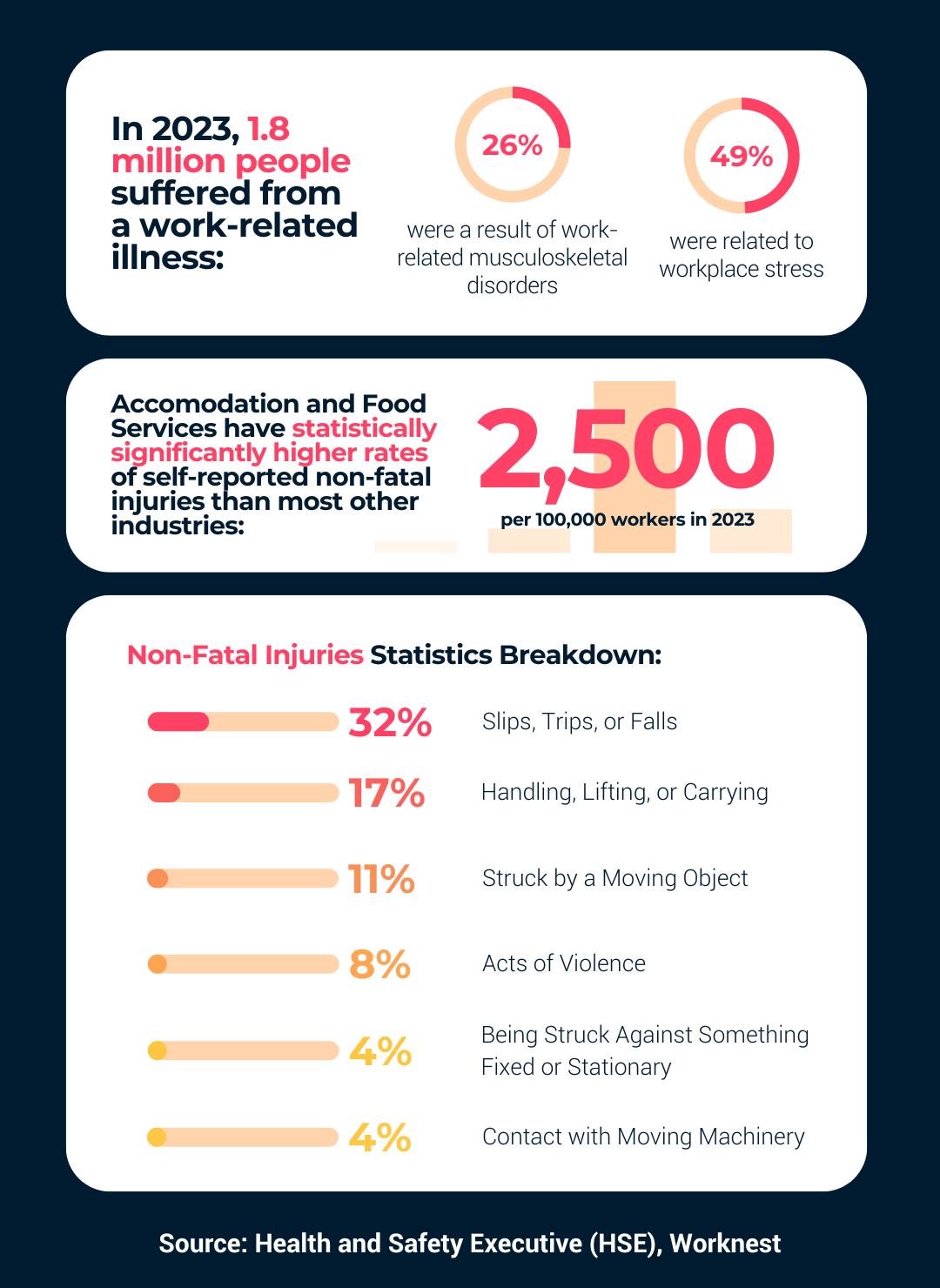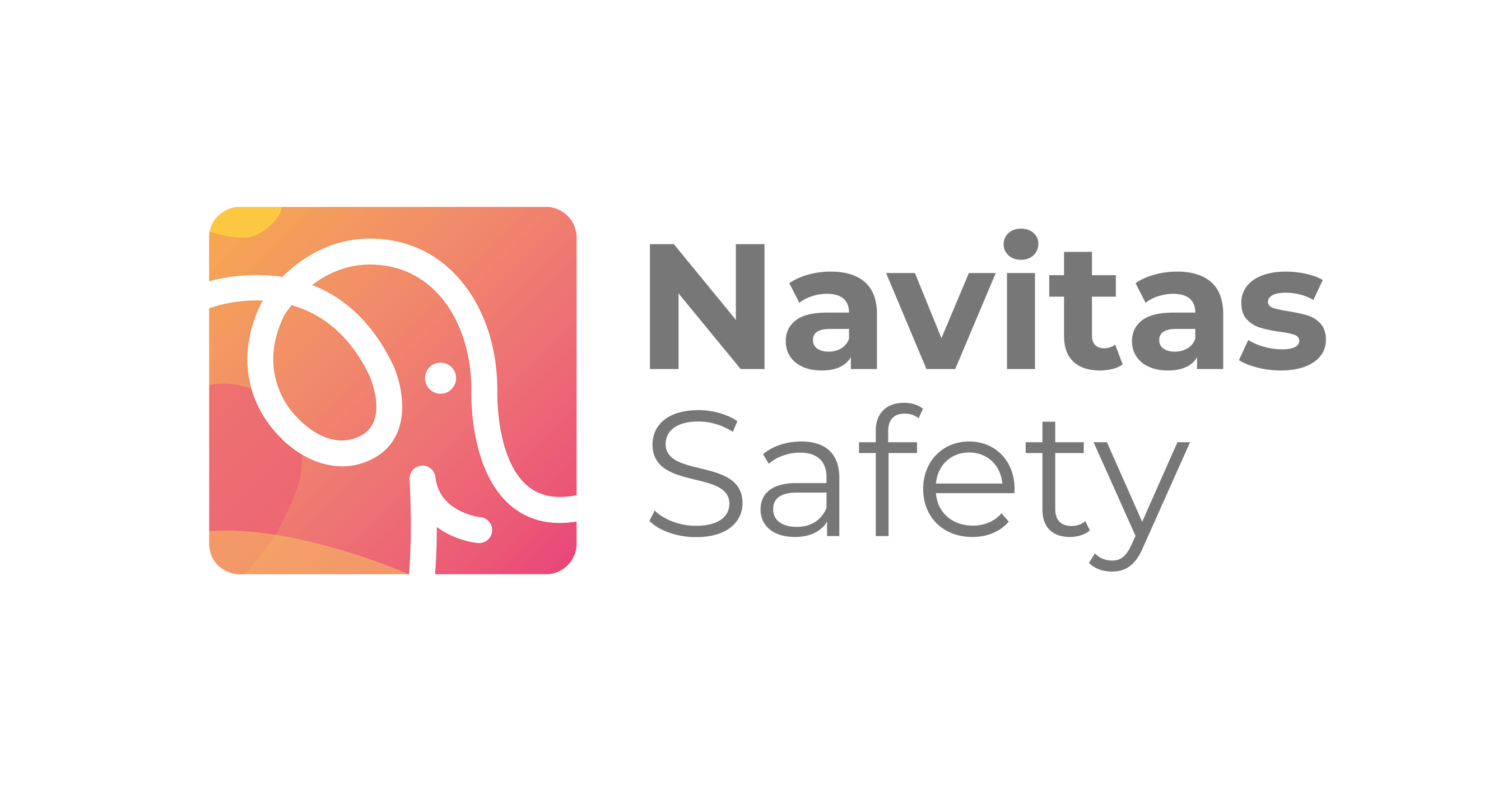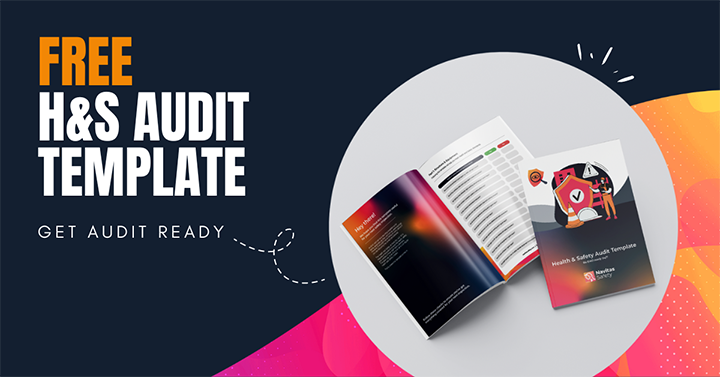Effective health and safety management plays an integral role in running a successful business. According to the latest Health and Safety Executive data, 135 workers sadly lost their lives due to a workplace accident in Great Britain in 2022-2023 – with 600,000 suffering non-fatal work-related injuries during the same year.
And breaches of health and safety law can be costly. Not only in terms of court fines but also in sickness absence costs, injury claims and business reputation damage. Breaches are also evidence of neglect of the moral duty of care a business owner has to help ensure a safe environment for their people and customers. That’s why health and safety auditing is so important to businesses.
Traditionally, health and safety auditing can be time-consuming and labour-intensive to carry out, but technology is revolutionising the way organisations manage audits and Health and Safety as a whole. Advancements in safety technology and audit software are enabling health and safety auditing to become more efficient, accurate, and easier to manage.
1. What is Health and Safety Auditing?
Health and safety auditing is a process used to evaluate an organisation’s health and safety policies, procedures, and practices. The primary goal is to ensure compliance with relevant regulations and standards, identify areas for improvement, and promote a safe and healthy working environment.
Health and safety law applies to all businesses. Whether you are a restaurant, warehouse, school, care home, mobile food van, hairdresser or any other business, you are legally required to keep your people safe. And that’s your team, customers and contractors alike.
As a business owner, it is your responsibility to manage your people’s health and safety. Therefore, doing an audit can help you check that the procedures and training you have in place are working well and are effective in identifying new hazards and control measures.
Health and safety auditing is a proactive approach to preventing accidents, incidents and near-misses from happening. Also, it demonstrates due diligence and understanding of the requirements of The Health & Safety at Work etc Act 1974.
These audits are best carried out in the form of a checklist with varied scoring methods. At the end, a final score is provided, illustrating whether everything is in place to show legal compliance and to minimise the risks of work-related accidents, incidents and fatalities at your premises. If your processes aren’t deemed safe enough, the score will be low and you will be required to carry out next steps to reduce any safety risks found.

2. Why is Health and Safety Auditing important?
Without an audit, how can you be sure that your premises are safe for your team to work in and your customers to visit? You don’t want that unnoticed cracked floor tile to cause one of your team to trip over. Indeed, this could impact their health and lead to time off work, as well as triggering pressures on the rest of the team to still deliver the work with one person down.
And how certain are you that your people know how to correctly operate machinery, lift and carry heavy items, dilute and use chemicals, use ladders and so on?

Incident and accident prevention
While these infographics sound alarming, the good news is that health and safety auditing is here to help prevent such accidents, fines and claims from happening.
Slips, trips and falls as well as manual handling remain major health and safety issues. That’s why carrying out periodic health and safety auditing will help ensure that the processes and procedures you have in place for reducing these types of risks are being managed correctly and are working well.
Make sure you have a reliable health and safety incident management platform to protect your brand and people at all times.
Save your business from brand damage and hefty fines
Poor compliance with health and safety law that results in a complaint, major incident, accident or fatality can be very costly to your business and massively detrimental to your reputation. If an investigation carried out by the Health & Safety Executive (HSE) or Local Authority Environmental Health Officer finds that it was a lack of risk control from your part, you could be prosecuted and heavily penalised in court by way of fine and/or imprisonment.
For example, a Yorkshire metals recycling company was fined £1.2m after a worker was injured after being struck by a wagon at a processing site. Another example is a food manufacturing company on the Wirral who were fined £400,000 after one of their employees had to have her leg amputated.
Ensure a positive safety culture and high team morale
Let’s be honest, the last thing you want to be doing is filing daily RIDDOR reports, processing fit notes and receiving personal injury claims. In order for your teams to thrive and work efficiently and effectively, a positive safety culture needs to be in place. Your people should feel safe and secure as they carry out their daily work. This in turn will make them more motivated, enthusiastic, driven to succeed and happy whilst at work.
4. How is Health and Safety Auditing carried out?
Health and safety auditing requires time, specific training and meticulous attention to detail. Therefore, to help you with this area of compliance it is advisable to team up with a competent health and safety professional. By partnering with a specialist to do this work for you, it will give you a different perspective from a qualified person outside of your business. In addition, you will gain confidence that you are doing things right for your people in terms of their safety and wellbeing.
Alternatively, you can form an internal audit team and run your own self audits in accordance with legal requirements and your brand standards. You can do this manually with paper records, or use specific audit software to track your end-to-end audit journey – with everything digitally recorded, tracked and stored!
Get help from a competent health and safety auditor
Audits can be time consuming and require adequate training. Partner with a health and safety auditing company with credentials and experience. Namely, you want to go for auditors who have a personal touch approach to put your people’s safety at the heart of everything they do.
Our lovely auditors here at Navitas Safety are Environmental Health Professionals who have been delivering safety audits to clients for 33+ years. They will engage, explain and devise an audit tailored for you to help keep your people safe and your business compliant.
Build and customise the right audit checklist
One key aspect of health and safety auditing is to really tailor it to your business’ size, needs and risks. You need to assess your organisation in-depth so that the right questions are included in the audit. In addition, the audit aims to fit your business needs and industry specific legislation. Indeed, a health and safety audit for a care home differs massively from one for a school, a timber merchant warehouse or a hair and beauty salon.
Build your audit checklist in categories with a scoring method. Create categories in which you can run through different checks for a similar area, equipment or type of risk. Questions can be descriptive or prescriptive.
In addition, create a scoring method so that you can evaluate your final audit score. For instance, a rating from 0 to 5 or a yes/no scoring.
Set up a clear corrective action plan
Running an audit is one thing. Writing the final report and the consequent corrective action plan is another! Carefully write your audit findings based on the level of risk that was found for each aspect of the audit. Then, organise your findings in a simple traffic-light priority system. This will help your team quickly visualise what needs correcting first.
Now, we know how time-consuming corrective action plans can be. This is where audit software tools are handy. Indeed, they allow you to run audits from a laptop, tablet or smartphone and take pictures for evidence. Our specialist health and safety auditing team here at Navitas Safety can help you create corrective action plans that are automatically generated once an issue is flagged out.
Schedule regular audits
Finally, let’s talk frequency. How often should health and safety audits be carried out? The answer is that it depends on your business needs, size and risks. Yearly in-depth health and safety auditing is essential and quarterly, smaller sense-check audits are advisable too.
In addition, don’t forget ad hoc audits if a new process, law or equipment is added. You will need to do an immediate health and safety audit rather than wait for the next scheduled one.
Don't forget to download our FREE H&S Audit template
5. The advantages of using technology for Health and Safety Auditing
The integration of technology in health and safety auditing has transformed the process, making it more efficient, accurate, and all-encompassing. Automation, real-time data collection, enhanced reporting, mobile accessibility and improved communication are just a few ways audit software is streamlining auditing. By embracing these technological advancements, organisations can ensure a safer working environment, achieve better compliance with regulations, and foster a proactive safety culture. As safety technology continues to evolve, we can expect even more innovative solutions to further enhance health and safety auditing processes.
1. Automating routine tasks
One of the most significant impacts of technology on health and safety auditing is the automation of routine tasks. Audit software can automate scheduling, notifications, and reminders for audits, ensuring that no scheduled audit is missed. This automation not only saves time but also reduces the administrative burden on your staff, allowing them to focus on more critical aspects of the audit.
2. Managing data
Modern health and safety software provides a centralised platform for storing and accessing all relevant data. This includes records of past audits, incident reports, safety training logs and compliance documentation. Having all this information in one place allows auditors to quickly retrieve necessary documents, compare past and present data, and identify trends or recurring issues. Having all of your data in one place leads to more informed decision-making and streamlined audit processes.
3. Digital checklists
Digital checklists replace traditional paper-based checklists, offering numerous advantages in terms of efficiency, accuracy and data management. They can be used by both professional auditors to streamline the auditing process as well as internal health and safety teams for self-auditing purposes. Digital checklists can be tailored to your organisation’s exact needs and are 100% online – making them easy to follow. Nothing can be missed or overlooked.
4. Real-time data and analysis
With the advent of smart devices, real-time data collection has become a reality. Sensors and wearable devices can continuously monitor environmental conditions and employee health indicators, providing real-time data that can be analysed instantly. During an audit, this real-time data enables auditors to identify potential hazards and non-compliance issues as they occur, leading to more proactive safety management.
5. Enhanced reporting
Advanced health and safety software solutions come equipped with powerful analytics tools. These tools can generate detailed reports and dashboards that provide insights into safety performance metrics, compliance levels, and areas that need improvement. Auditors can customise these reports to focus on specific aspects of the audit, making it easier to present findings to management and stakeholders in a clear and concise manner.
6. Mobile accessibility
Mobile technology has made health and safety auditing more flexible and accessible. Auditors can use mobile devices such as tablets and smartphones to conduct audits on-site, complete with checklists and data entry forms. This mobility ensures that audits are not confined to office hours and locations, allowing for more thorough and frequent assessments. Moreover, photos and videos can be easily incorporated into audit reports to provide visual evidence of findings.
7. Improved collaboration
Effective communication and collaboration are essential for successful health and safety auditing. Technology facilitates better communication between auditors, employees and management. Cloud-based platforms enable multiple users to access and collaborate on audit documents in real-time, regardless of their physical location. This improved collaboration ensures that all relevant parties are informed and can contribute to the audit process, leading to more comprehensive and effective audits.
8. Tracking and regulatory updates
Keeping up with constantly changing regulations can be challenging. Health and safety software often includes features that track regulatory updates and automatically adjust audit criteria to reflect new laws and standards. This ensures that audits are always up-to-date with the latest compliance requirements, reducing the risk of non-compliance and potential legal issues.
9. Incident reporting and tracking
Safety technology enhances the reporting and tracking of incidents, which is a critical component of health and safety auditing. Incident reporting systems allow for the immediate reporting of accidents and near-misses, complete with detailed descriptions, photos, and witness statements. This instant reporting helps in promptly addressing and mitigating risks, and the data collected can be used to identify patterns and prevent future incidents.
6. How can Navitas Safety help you streamline your Health and Safety Auditing process?
We understand that it all sounds like a lot. Let our friendly health and safety auditors be a helping hand to plan bespoke safety audits tailored to your business. Drop the pen and paper audit checklist, we’ve got you covered digitally!
Why choose Navitas Safety as your health and safety auditing partner?
- A specialist edge with 33+ years of experience helping businesses
- All-in-one audit platform to make your health and safety auditing stress-free
- Instant results with automated corrective plans
- One digital place for all audits, checklists, reports and corrective plans
- Tailored review and monitoring of your health and safety policy
- Wide range of audit types: full-day, half-day, gap-analysis policy review visits, revisits for failed audits etc.






